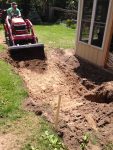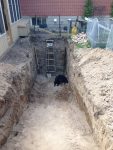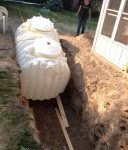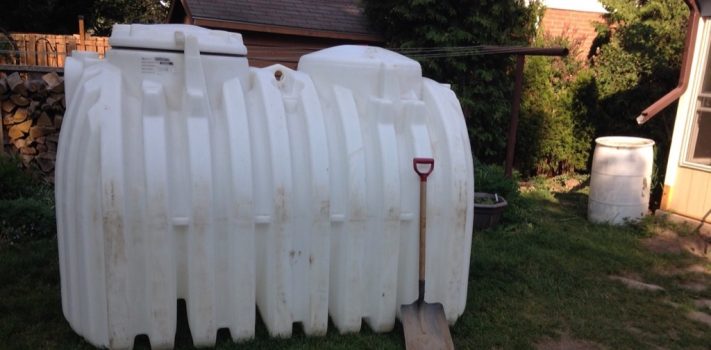The Black Swan is the metaphor often used when describing an unlikely event, that comes as a major surprise, having a catastrophic effect.
Which Risks Do We Attempt to Mitigate?
The news headlines in March, 2024 were rife with dire ‘official’ warnings of coming cyber attacks on water systems, echoing pronouncements previously made by that billionaires club and UN partner, The World Economic Forum, as the next big threat to follow the coronavirus. Was this yet more fear-mongering propaganda, or are they actually planning something?
Also in the news, that hard-left urban center Toronto is contemplating the introduction of a stormwater tax. In case you hadn’t yet heard – many local governments had already been collecting stormwater taxes for more than a decade. Why is this now news?
While it is hard to believe that it has been two years already, but most of us still recall the massive trucker protests across the continent in 2022 – protests which reverberated in copycat campaigns around the world. But why was it until winter 2024 that finally we are seeing reports of ‘hearings’ for protesters still in prison awaiting trial? And this, in that bastion of Canadian conservatism and freedom, Alberta – two years in prison without a trial for what will likely turn out to be trumped-up charges for political dissent?
Political Risk Remains High
Also in 2022, you may recall from our earlier post, the utilities commission was shutting off water supply for the ‘crime’ of not booking an appointment to upgrade to their SMART Meter.
By spring 2023 we had already successfully overwintered without a water connection. How we were able to relay our garden rainwater collection system into a whole house water supply using an RV pump to keep the toilet going and the shower flowing – was the topic of our initial report published on this blog on February 15th and 16th, 2024. And, to answer one of the common questions we were asked – no, we did not buy bottled water.
Providentially, relying on rain and snow melt we were able to refill our 500 gallons of water storage monthly throughout the winter. Although we never actually ran out of water, a few times we came uncomfortably close to that brink.
And, we reflect on the facts that all throughout the entire episode of Public Health fear mongering – the “15 days to slow the spread”, or depending on locale, “the two weeks to flatten the curve” – all of which extended into years of lockdowns and an endless stream of meaningless, even harmful interventions – this household has suffered no illness – zip. Not only did the allegedly raging ‘pandemic’ not touch us, neither did we experience any waterborne health ailments.
As the weather grew milder in the spring of 2023 it became clear that our circumstances were not about to change in the foreseeable future. We began reviewing options for more serious water storage.
With reality being stranger than fiction – we might also recall well-known novel protagonists known as “the Group” preparing for an upcoming economic collapse by including a cistern in their preparations. Whereas many homes seemed to have a cistern in days gone by, they seem to have gone out of style in the modern era of extensive grid power, deep wells and water pipelines. And yet, is there any better way to become self-reliant than to harvest and store precipitation runoff below the ground where it stays cool in summer and is not prone to freeze in the winter?
Evaluating Options
Next question: A cistern is fundamentally a large tank used to store water – how does one go about adding such?
My initial thought was to form a tank using lumber and plywood, and pour concrete in place. Even though I have been a part of many such construction projects, the more I thought about this, the less attractive it became. As I assume I am working alone, it would be too big a project to mix concrete by hand, so realistically it would be delivered by ‘ready-mix’ truck. I had already done plenty of wheelbarrowing as a young lad and for some reason I was not looking forward to doing more of that now that I am older and wiser – you might read ‘middle aged’. The site where it made most sense to situate the cistern, would not be easily accessed by a truck delivering concrete. Moreover, it would need to be poured in stages requiring the truck to visit several times, and each time it would require a cement pump. And, then would I need to hire someone with more experience to help ensure that final results approximated success? And finally, would the whole thing need to be lined with epoxy or membrane? Would the concrete poured on site end up being too porous?
My next thought was focused on procuring a pre-cast concrete cistern. The order, I was told by one supplier, would need to be placed in spring or early summer and would be slated for delivery later in summer or fall – as the precast operation was only able to produce cistern tanks during the warm weather season. And then, the truck delivering it would need to have immediate access to the excavation in order to place the delivery. There again is the kicker – the ideal cistern site was not going to be easily accessible to a highway truck. Renting a large crane to lift a multi-ton pre-cast cistern tank over a distance of 100 feet would have put us well over budget. Adding to that, most crane companies with that size of crane, were not even remotely interested in discussing the possibilities with a small, private, individual customer.
The third option I looked into was a poly tank. I located a supplier of tanks sold to farmers to store water for livestock – tanks which could be buried – Eureka! Their 1,150-gallon tank was under 500 pounds in weight, was inventoried at a location less than three hours from here and was available for delivery with just a few days notice. While plastic might have other issues – it was affordable, it was light enough that I could probably install it by myself without special equipment, and it was readily available. For reference, the tank I chose was manufactured by Ace Roto-Mold, Den Hartog Industries of Iowa and acquired through a local distributor and no, I have no affiliation.
I tentatively planned to receive the poly tank in late May, 2023.
Digging
The ideal location for the cistern in this case was situated between a couple of raised beds and a sunroom where we start our plants each spring. A large machine could not get into that location without taking down existing fencing and without damaging already planted crops.

 One of our neighbours had a small backhoe which I had hoped would be of use for the excavation. He was going to be back from his trip abroad on the third weekend in May, after which we finally got the machine into position and started relocating the shrubs that had occupied the intended location. Incidentally, this was the one thing that the backhoe did rather well – probably the only thing. Beyond a couple of feet of depth, progress declined glacially. While the machine was equipped with four wheel drive, it was getting stuck and just didn’t have the reach to be able to get the job done. For this and a variety of reasons we were resorting to ‘ye olde spade, wheelbarrow and elbow grease’ to dig out the hole six feet wide, ten feet long and six feet deep. Also, at one end, I additionally dug out an access ramp so that later I could gently slide the cistern tank into place. And of course, the photogenic young dog liked to rest herself in the cool earth of the excavation when she wasn’t assisting the dig.
One of our neighbours had a small backhoe which I had hoped would be of use for the excavation. He was going to be back from his trip abroad on the third weekend in May, after which we finally got the machine into position and started relocating the shrubs that had occupied the intended location. Incidentally, this was the one thing that the backhoe did rather well – probably the only thing. Beyond a couple of feet of depth, progress declined glacially. While the machine was equipped with four wheel drive, it was getting stuck and just didn’t have the reach to be able to get the job done. For this and a variety of reasons we were resorting to ‘ye olde spade, wheelbarrow and elbow grease’ to dig out the hole six feet wide, ten feet long and six feet deep. Also, at one end, I additionally dug out an access ramp so that later I could gently slide the cistern tank into place. And of course, the photogenic young dog liked to rest herself in the cool earth of the excavation when she wasn’t assisting the dig.
Instead of taking the initially estimated ‘days’, it ended up taking in the order of weeks to prepare the hole. Each rock needed to be broken free from the compacted subsoil before piling it up, loading a wheelbarrow at ground level and piling it high in a low traffic area of the property.
On the final Saturday in May the cistern arrived at the roadside. I paid my bill, and off I went to try and arrange for the backhoe, once again.
By the time we had the cistern tank chained to the backhoe we once again realized that the machine was too small for even this task. Nevertheless, as two of us steered and pushed the tank over the grass, the backhoe was able to drag it nearer its eventual location.
It was a good day now that the tank was less than 30 feet from its final destination. And yet, I still needed to do some final preparation of the excavated hole, which included some final levelling and making sure that the sides were straight and perfectly parallel – because, once the cistern was started down the ramp encountering any irregularities could become significant as I would be relying on both gravity and kinetic energy to do that part of the job.
 Finally, I maneuvered the tank to the ramp using a long iron bar as a lever. Once it was positioned at the top of the ramp, I proceeded to set up a pulley slung to a sturdy tree 50 feet behind the ramp, secured using a truckers’ ratchet strap. From there, I attached 1/2” polypropylene rope, to the lug at the top of the tank. The other end went through the pulley to another stationary object, connected via a fence puller ‘come along’. The overarching idea was that I would need to slow the tank as gravity pulled it down the ramp. I nudged the tank using the lever until it started its slide down the ramp, then I let out some slack so it could begin its descent. At this point, I placed a couple of 2x4s onto the ramp and at the bottom of the hole so that the slide would not damage the tank and so that I would have a consistent level of friction. This took several hours but I managed to maneuver the tank into place. I then double-checked it for level before disconnecting the rope and celebrating a good morning’s work.
Finally, I maneuvered the tank to the ramp using a long iron bar as a lever. Once it was positioned at the top of the ramp, I proceeded to set up a pulley slung to a sturdy tree 50 feet behind the ramp, secured using a truckers’ ratchet strap. From there, I attached 1/2” polypropylene rope, to the lug at the top of the tank. The other end went through the pulley to another stationary object, connected via a fence puller ‘come along’. The overarching idea was that I would need to slow the tank as gravity pulled it down the ramp. I nudged the tank using the lever until it started its slide down the ramp, then I let out some slack so it could begin its descent. At this point, I placed a couple of 2x4s onto the ramp and at the bottom of the hole so that the slide would not damage the tank and so that I would have a consistent level of friction. This took several hours but I managed to maneuver the tank into place. I then double-checked it for level before disconnecting the rope and celebrating a good morning’s work.
The vendor that had sold the tank also supplied the foot valve, bulkhead adaptor, a coil of 1” pipe, and the various plumbing pieces needed for the run to the pump house. I used a bimetal hole saw to cut an access hole in the top of the tank to fit the bulkhead adaptor. I cut the one inch pipes to length using a ‘Rigid’ tool for plastic pipe and connected them using stainless steel hose clamps.
The larger input pipe, 4” PVC, was cut to length using a hacksaw. And was held in place with a rubber grommet supplied for the purpose by the same vendor.
I was impressed with the 3/8 inch thickness of the cistern tank walls. By comparison, IBC totes have just 1/16 inch thick walls.
Next, I needed to decide whether I’d wait to accumulate 1150 gallons of rainwater, or else call a water delivery service for the initial fill of the cistern. The instructions from the manufacturer made it clear that before one would be able to backfill around the tank, it needed to be full of water. Water delivery dispatch informed that it could take two to three days to schedule a delivery.
A side note about payment using cash: It seems to speed up the passage of time! Surprisingly enough, I received a phone call from the truck driver within minutes saying that he’d be right over. Before the end of that first day I had a full tank.
I also wanted to be sure that the tank had no leaks. Since the poly tank is translucent, I used a permanent marker to indicate the current meniscus of the water. I monitored it for several weeks during which the level did change slightly. Since I saw no signs of wetness in the excavation, I attributed the barely lower water meniscus to the slight change in shape of the tank being filled for the first time.
The protocol for backfilling called for a progressive approach. Each day I would do a few inches of fill and then allow the soil to settle before doing more the following day. It was July by the time the backfill was completed.
It was the third week of July when I commissioned the jet pump. Like the RV pump that I had been using, this was designed not to require a pressure tank. Anytime the faucet was opened, it would automatically engage the pump, and it would shut off when the faucet was shut off. Additional details on the pump can be found below.
A day later we welcomed guests as our eldest daughter and her family arrived for an extended visit. And soon after, the proverbial Black Swan arrived.
(To be concluded tomorrow, in Part 2.)










